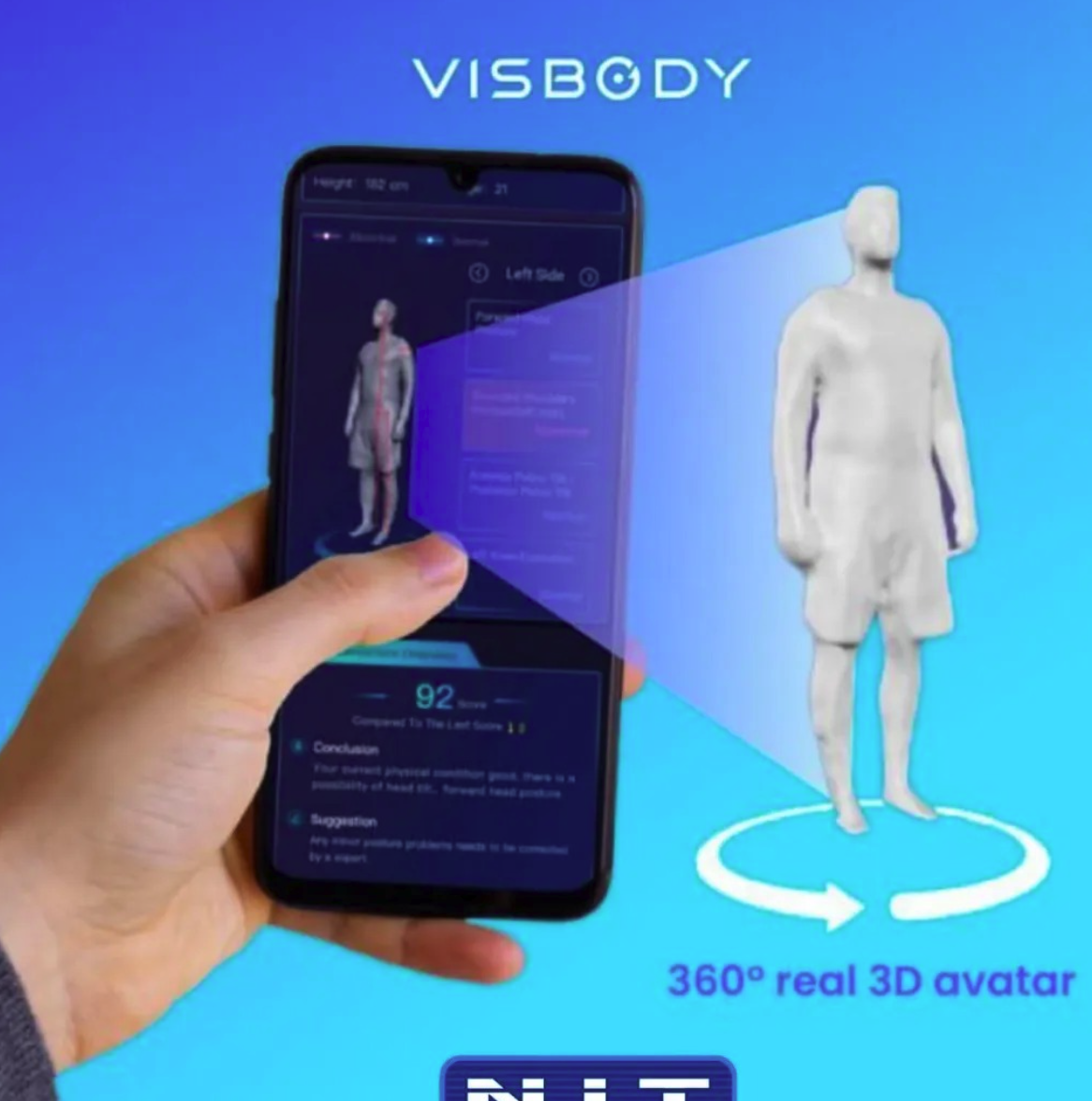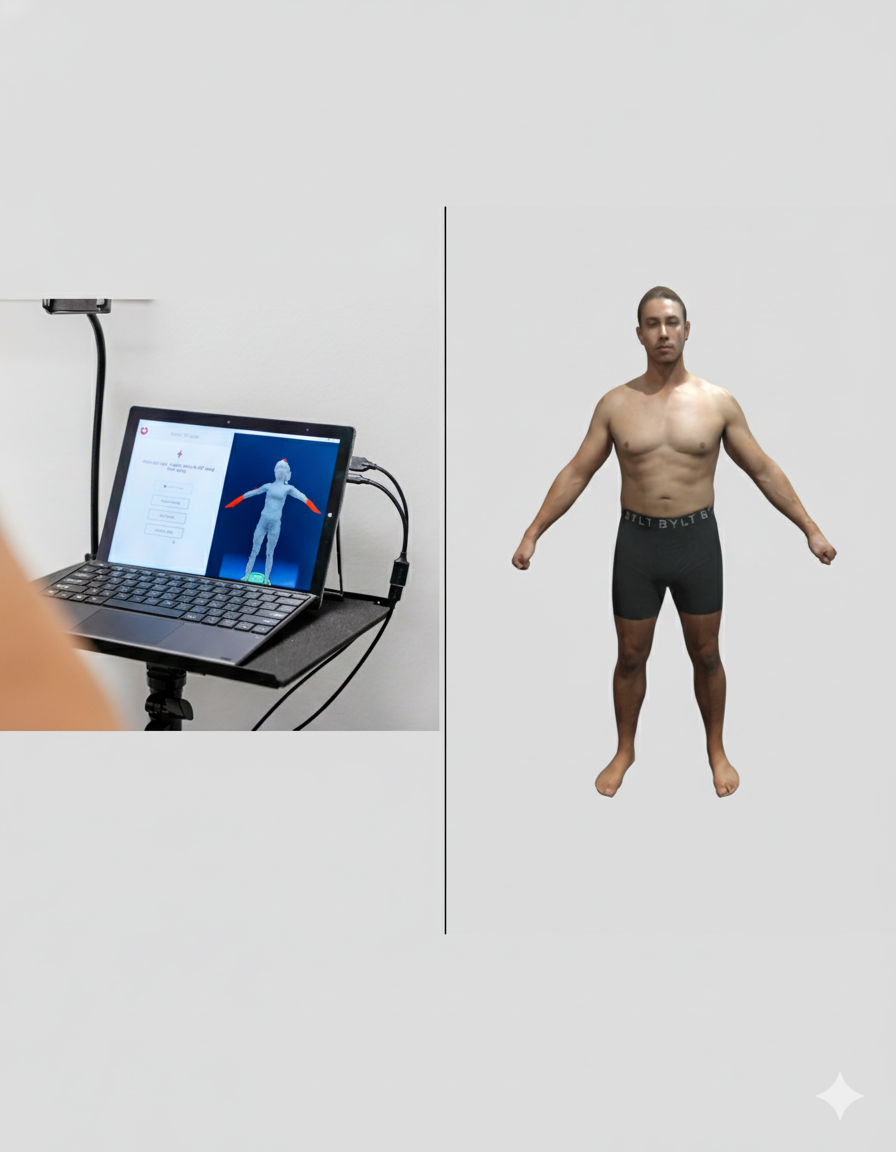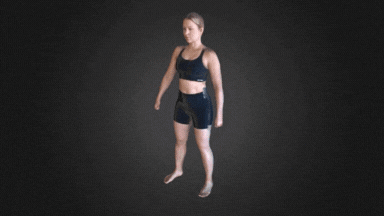
Fit3D vs Visbody (2025): Scan Accuracy, Portability, Pricing & Support Comparison
Fit3D vs Visbody: Which 3D Body Scanning System Is Better for Operators
Meta Description:
Title Tag: Fit3D vs Visbody (2025) | Accuracy, Cost, Scan Quality & ROI Comparison
Introduction
Visbody and Fit3D are both players in the body‐composition and 3D scanning space—but they arrive from very different starting points. Fit3D’s new SNAP solution uses optical‐only AI scanning, while Visbody combines optical imaging with BIA (bio-electrical impedance analysis).
Importantly: Visbody is a newer company based in China and, while globally available, the location gap can matter when thinking about support in North America. Fit3D, by contrast, is more established in the US market.
Fit3D’s latest system is also dramatically lighter and more adaptable: instead of a heavy platform, Fit3D now runs on a 1-lb tablet, produces a full 3D scan in 10 seconds, and requires zero shipping or installation.
In this article we compare both systems across:
- Technology, Application & Method
- Scan Quality
- Cost & ROI
- Space & Portability
- Primary Use Cases
1. Technology, Application & Method
Fit3D: Optical Scanning (Consistent & Repeatable)
Fit3D uses structured light optical scanning combined with years of body‐shape AI modeling. Because it is optical‐only, the results are much less impacted by:
- Hydration or water retention
- Recent food or drink
- Bathroom use
- Time of day
- Hormone cycles
This makes it well suited for facilities requiring consistent, repeatable progress measurement.
Workflow advantages include:
- Scan time: 10 seconds
- No metal contacts, no electrodes
- No complicated prep
- Fewer moving parts to service
Visbody: Optical + BIA Blended Method
Visbody combines a 3D optical scan with BIA footplates and handles. While this could give you both imaging and composition data, for many operators it means higher cost, more hardware and more variability.
Potential drawbacks:
- BIA readings fluctuate significantly due to hydration, sweating, time of day, etc.
- More hardware = more points of failure
- Support and service may be less local (given the company’s base in China)
Because Visbody is comparatively newer in the global fitness market, North America operators should ask detailed support and service questions, including warranty, technical support response time, parts availability.
2. Scan Quality
Fit3D Scan Quality
Fit3D’s optical scans are:
- Real-user driven (not CGI)
- High resolution
- Consistent between scans
- Built on 13+ years of industry data and improvements
You get realistic visuals your clients can trust and understand.
Visbody Scan Quality (Polite, Balanced Observation)
Visbody’s website contains several attractive before/after images, but in our review we found it less clear to identify bona fide unedited scans from real users. Some imagery appears stylized or heavily rendered.
Our guidance:
- Ask for live demo scans using staff or real clients
- Confirm what the client will actually see, not just marketing visuals
- Check for consistency of output between scans
This isn’t to say Visbody is invalid—but it does warrant due diligence, especially if you’re investing significant capital.


3. Cost & ROI
Fit3D Pricing
- Subscription: $100/mo per location
- Hardware: ~$300–$450 (tablet you source locally)
- No shipping
- No installation cost
- Unlimited scans, no long-term contract
Why Fit3D Means Faster ROI
- Low entry cost
- No large upfront install
- Easier scale across locations
- Faster deployment = faster monetization
Visbody Pricing
Visbody systems typically require:
- Hardware investment: ~$8,000-$14,000+ (* from ChatGPT ).
- Shipping and installation costs
- Ongoing service or subscription fees
Longer payback horizon compared to a software-centric model.
4. Space & Portability
Fit3D Space Requirements
- A tablet & stand take up roughly 20" square.
- Setup time about 3 minutes
- Truly portable: ~1 lb hardware
Visbody Space Requirements
- Large scanning platform
- Footplates, handles, electrical wiring
5. Primary Use Cases
Fit3D Best For:
- Gyms with medium to high scan volume
- MedSpas tracking client outcomes
- Franchises or multi-location operators looking for fast, scalable deployment
- Facilities wanting low-maintenance for ownership.
Visbody Best For:
- Clinics or facilities that value BIA + optical data
- Locations with dedicated support and hardware tolerance
- Buyers willing to invest more upfront and manage service logistics
- Buyers who care more about the visual appearance of the system itself versus reporting quality.
For North American operations especially, the support infrastructure and hardware cost may be key determinants.
6. Multi-Location Deployment & Support Considerations
Because Fit3D is software-based and local tablet hardware is minimal, scaling across multiple sites is simple and cost-efficient. Just purchase another tablet per location & go. Expanding across franchise groups is hundreds of dollars versus thousands - great for cash flow & ROI considerations.
Fit3D is app based meaning it's no shipping costs or lead times. Deploy across all your clubs in a weekend, versus months.
Visbody, by contrast, involves more complex hardware setups and potentially less localized support (given its Chinese base). For U.S. or Canadian businesses, verifying support channels, parts availability, service response times and shipping logistics becomes critical.
7. Cloud Reporting / Data Management
Regarding cloud reporting:
- Both offer cloud based dashboard for users and coaches.
- Both Claim to have AI tools that offer better reporting.
- Both can show key circumference measurements, body composition values, and wellness scores related to body shape.
Conclusion: Fit3D vs Visbody — Which Wins in 2025?
When you account for accuracy, consistency, deployment ease, cost and support infrastructure, Fit3D is the stronger choice for most gyms, medspas and multi-location operators.
✔ Fit3D Strengths
- No shipping costs or backlogs.
- Lower cost for hardware.
- Optical‐only: consistent, print-ready scans
- Established North American support with 24/7 AI assistants.
✔ Visbody Strengths
- Hardware looks nice.
- Familiarity of BIA reports
- Printable Reports
✔ Important Considerations
If you’re evaluating Visbody:
- Confirm your local support and parts logistics
- Request sample real scans and demo workflows
- Verify hardware cost, shipping and installation delays
If you’re evaluating Fit3D, you’ll benefit from lower cost, faster deployment, minimal hardware and proven consistency. Just try it out for 30 days. Service terms are month to month with no long term contracts.








